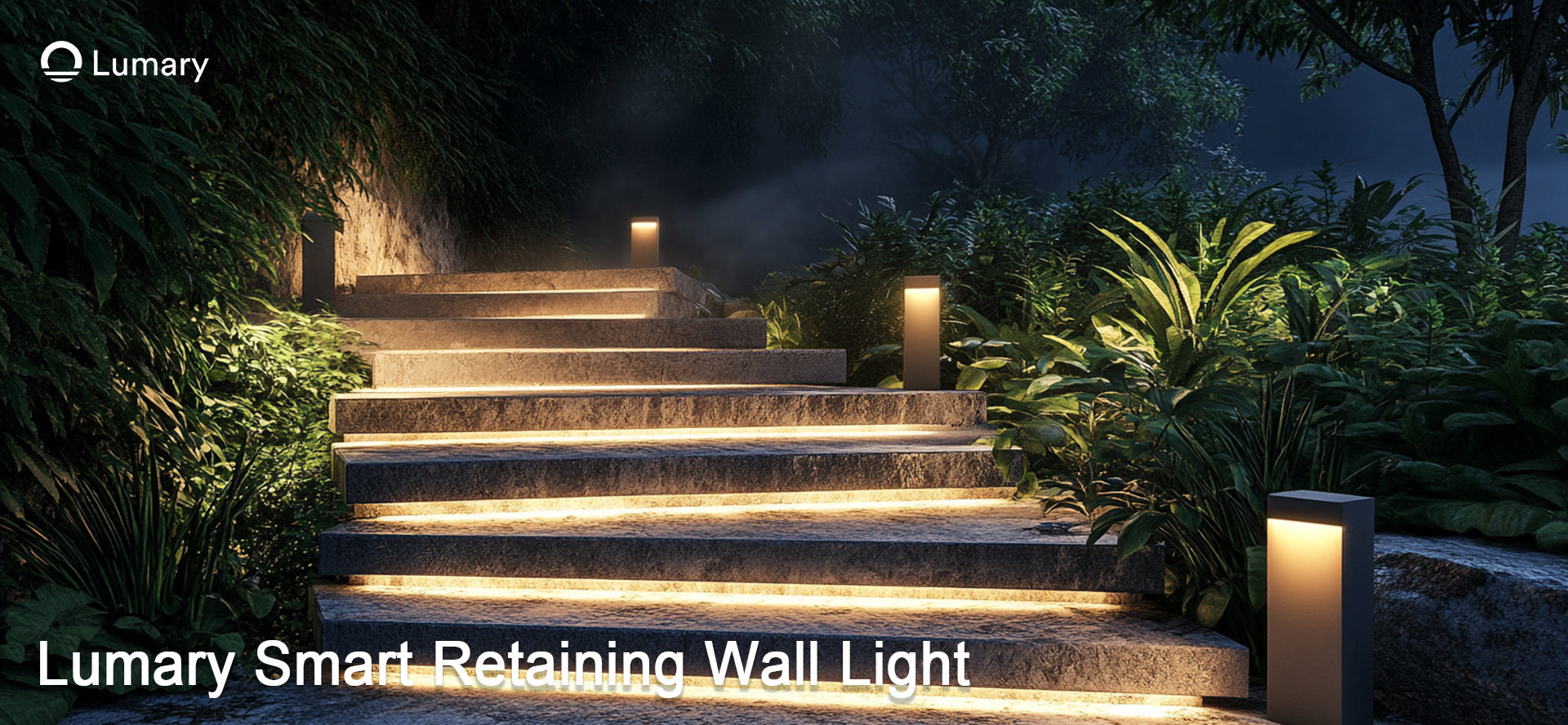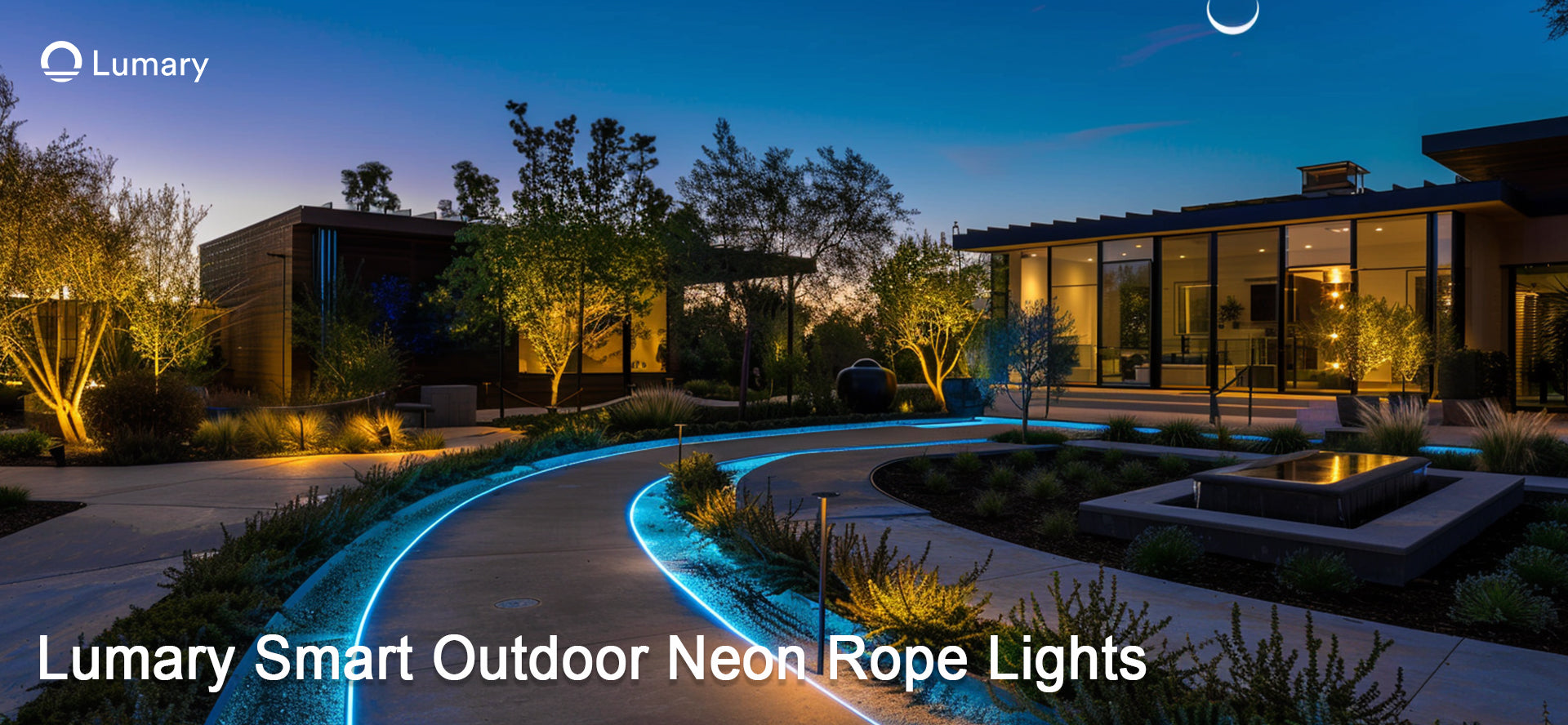Your outdoor area can look great even at night. Landscape lighting does more than just light up spaces. It makes your yard prettier, keeps walkways safe, and feels inviting. Whether you have a small patio or a big garden, the right lights can change everything.

Key Takeaways
- Look at your yard before picking lights. Think about the size and shape to decide how many lights are needed.
- Show off cool parts of your yard with bright lights. Use spotlights or uplights to make trees, fountains, or special structures stand out.
- Keep paths and stairs safe with lights. Use gentle lights to help people see and avoid tripping, making your yard friendly.
Assess Your Outdoor Space
Look at the size and shape of your yard
Check out your outdoor area before picking lights. Is it a small patio, a big backyard, or something else? The size and shape of your yard will help you decide. A tiny garden might need just a few lights. A larger space may need layers of lighting to cover everything. Walk around during the day and picture how it should look at night. This step helps you plan well and avoid too much or too little lighting.
Find special spots to highlight
Every yard has something cool to show off. It could be a pretty tree, a fountain, or an interesting building detail. These spots should stand out. Use bright lights or upward-facing lights to make them pop. Lighting these areas adds beauty and gives your design a purpose. Think about what you want people to notice first when they visit. A well-lit feature can make your yard look amazing.
Light up paths and stairs for safety
Keeping people safe is important when adding outdoor lights. Pathway lights help guide people and prevent falls. Stairs need good lighting so everyone can see where to step. Use soft lights spaced evenly along paths and steps. This makes your yard safe and welcoming. Safety lights can still look nice and match your overall design.
Explore Landscape Lighting Types and Styles
Common lighting types like path lights, spotlights, and string lights
There are many kinds of outdoor lights to pick from. Path lights help people walk safely on driveways or walkways. They are small, useful, and look nice. Spotlights shine on special things like trees, statues, or walls. String lights add a fun and magical feel to patios or pergolas. Each type of light has its own job. Think about what your yard needs the most.
Match lighting styles to your outdoor design
Your lights should match the look of your outdoor space. Modern spaces look great with simple and smooth light fixtures. Rustic designs go well with lantern-style lights or ones made of wood or bronze. Traditional spaces feel timeless with warm-colored, classic lights. Choose lights that fit your style to make your yard feel complete and welcoming.
Use lights for ambiance, safety, and tasks
Outdoor lights can do more than one thing. They can make your yard cozy, keep it safe, and help with tasks. Dimmable lights can set a relaxing mood for evenings. Motion-sensor lights protect your home by turning on when needed. Adjustable lights can help with grilling or reading outside. The right lights make your yard both pretty and useful.
Placement and Layering Techniques for Outdoor Landscape Lighting

Smart placement to show off special features
Think about what you want to show in your yard. Do you have a cool tree, flower bed, or unique wall? Use spotlights or uplights to make them stand out. For example, putting a light under a tree can create neat shadows on its branches. Lighting up parts of your house, like columns or stone walls, adds style and depth. Walk around your yard at night to find the best spots for lights.
Using layers for a balanced look
Mixing different lights makes your yard look better. Don’t just use one type of light. Add path lights for safety, spotlights for focus, and string lights for a cozy feel. This mix makes your yard more interesting. Place some lights low and others higher up. This copy of natural light makes your yard look polished and complete.
Avoiding mistakes like too much light or straight rows
Too many lights can make your yard look too bright. Don’t put lights in straight rows because it looks stiff and fake. Instead, spread them out for a softer look. You don’t need to light every part of your yard. Focus on key areas and let shadows add contrast. This way, your lighting will be useful and look great.
Power Source Options for Landscape Lights
You have different ways to power outdoor lights. Each option has good points and things to think about. Let’s look at them to help you choose the best one.
Solar-powered lighting: Pros and cons
Solar lights are a favorite for outdoor spaces. They’re eco-friendly and simple to set up. No wires are needed—just place them in sunny spots. They charge during the day and light up at night. They also save money since they don’t use electricity.
But there are some downsides. If your yard doesn’t get much sun, they may not work well. They’re also not as bright as other lights, which might not suit areas needing strong light.
Tip: Use solar lights for decoration or sunny areas.
Low-voltage lighting: Benefits and considerations
Low-voltage lights are efficient and bright. They’re safer to install than high-voltage ones and use less energy. These lights work well for paths, gardens, or highlighting yard features.
You’ll need a transformer to lower your home’s power voltage. This costs a bit upfront, but you’ll save energy over time. Low-voltage lights are a dependable choice for most yards.
Hardwired lighting: When to choose this option
Hardwired lights are strong and long-lasting. They connect directly to your home’s power, giving steady, bright light. They’re great for big yards or places needing strong lighting, like patios or driveways.
They cost more because they need professional setup. But if you want durable and reliable lights, hardwired ones are worth it.
Choosing the Right Bulbs for Outdoor Landscape Lighting
Why energy-efficient bulbs like LEDs are a great choice
LEDs are perfect for outdoor lighting. They use less power, saving money on energy bills. They also last longer than regular bulbs, so you replace them less often. This makes them a smart and budget-friendly option. LEDs stay cool, making them safer and better for the environment. Whether lighting a path or setting a cozy mood, LEDs are a reliable and eco-friendly pick.
Picking the right color temperature and brightness
The color and brightness of light can change your yard’s vibe. Warm white light (2700K-3000K) gives a soft, cozy glow. It’s great for relaxing spots like patios. Cooler white light (4000K-5000K) is brighter and good for tasks or showing off features. Brightness matters too. Too bright feels harsh, while too dim isn’t useful. Adjustable bulbs let you control the light to match your needs.
Tip: Try out different colors and brightness levels before deciding.
Choosing strong, weatherproof bulbs
Outdoor bulbs must handle tough weather. Rain, wind, and heat can ruin regular bulbs fast. Pick bulbs labeled as waterproof or weather-resistant. These are made to last through all seasons. Materials like stainless steel or aluminum make them even stronger. High-quality, weatherproof bulbs keep your outdoor lights working and looking great all year.
Smart and Eco-Friendly Lighting Solutions
Cool features of smart lighting systems
Smart lights make controlling outdoor lighting simple and fun. With an app, you can change brightness, colors, or turn lights on and off. Imagine sitting outside and making your lights glow warmly without moving. Voice commands make it even easier. Say, "Turn on the garden lights," and they light up right away. These tools save time and help set the perfect mood easily.
Some smart lights let you set timers. You can program them to turn on at sunset or off at bedtime. This makes life easier and keeps your yard safe when you're away.
Why eco-friendly lights are a smart choice
Eco-friendly lights save energy and lower your electric bill. LED lights use less power than regular bulbs and last longer. This means fewer replacements. Solar lights are another great pick. They charge with sunlight during the day and glow at night without using electricity.
Choosing energy-saving lights helps you save money and the planet. It’s good for your wallet and the environment.
Example: Lumary Smart LED Outdoor Landscape Lights RGBAI Spotlight
Looking for smart and eco-friendly lights? Try the Lumary Smart LED Outdoor Landscape Lights RGBAI Spotlight. These lights offer 16 million colors to match any event. Control each light separately with the Lumary App to adjust brightness, colors, and timing.
You can also use Alexa or Google Assistant for voice control. Want to wow your friends? Sync the lights to music for a fun party vibe. These lights are durable, weatherproof, and energy-efficient. They’re more than lights—they’re a complete outdoor lighting solution.
Picking the right landscape lighting can be simple. First, check your yard and think about what it needs. Look at different light types and decide where to place them. Choose good power sources and bulbs for your lights. Smart and eco-friendly lights help save energy and look modern. Want to make your yard better? Use these tips now to create a pretty and useful outdoor space.
FAQ
What is the best way to start planning outdoor lighting?
Start by walking around your yard at night. Identify areas needing light for safety or beauty. Think about how you want your outdoor space to feel.
Can I install outdoor landscape lighting myself?
Yes, you can try DIY outdoor lighting projects. Solar or low-voltage lights are easy to set up. For hardwired systems, consider hiring a professional.
How do I create breathtaking outdoor lighting effects?
Use layers of light. Combine path lights, spotlights, and string lights. Highlight trees or walls. Experiment with colors and brightness to create a magical atmosphere.

















